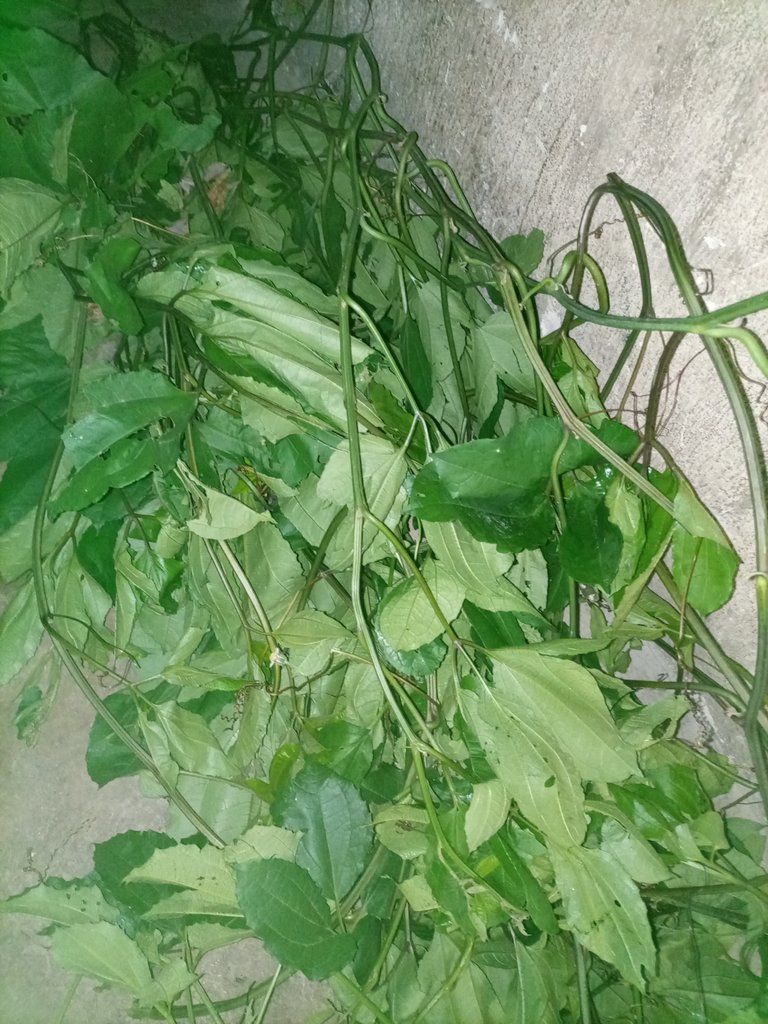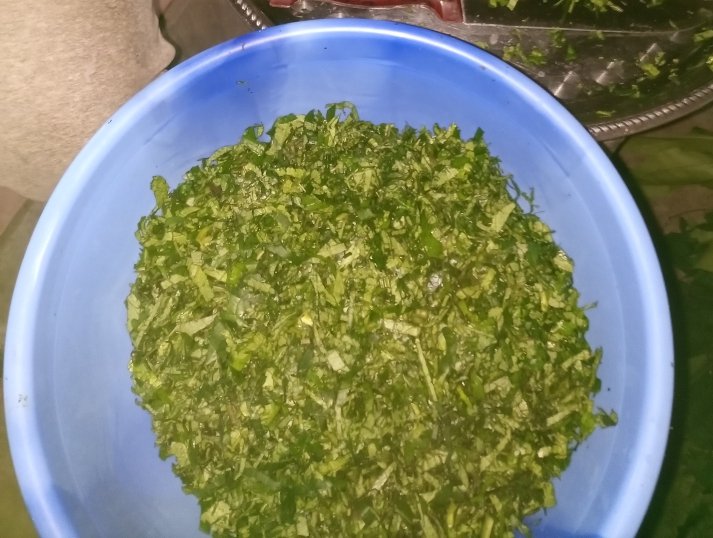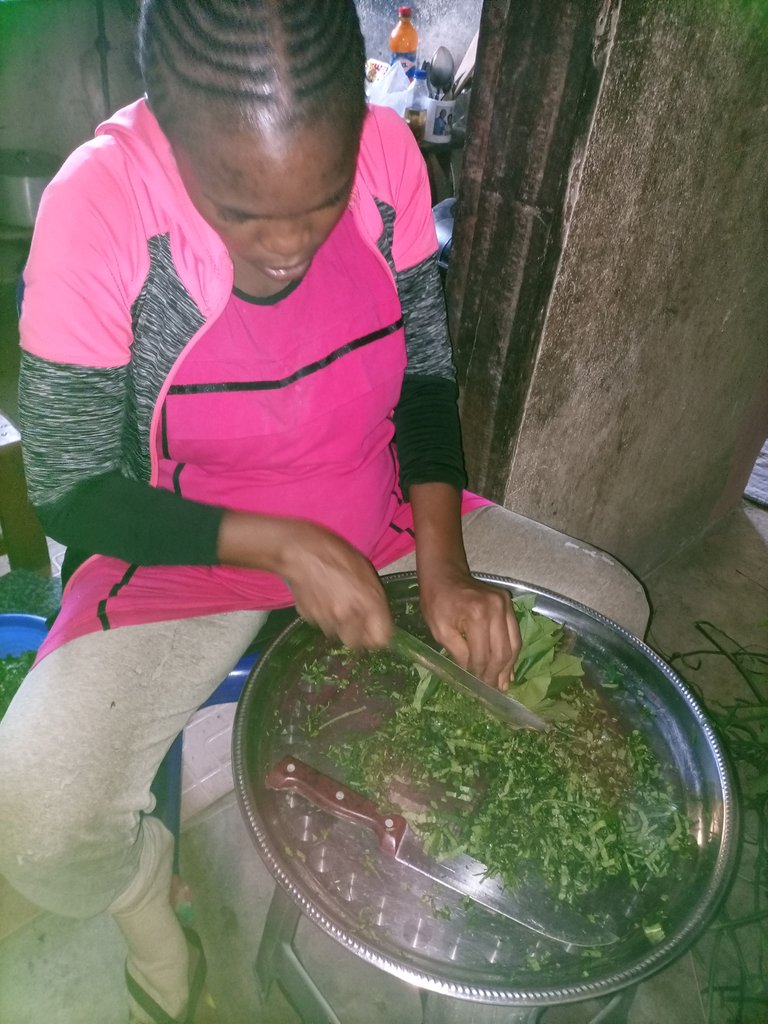The Green Wonder: Unveiling the Nutritional Marvels of Pumpkin Leaves
Good morning my great people of hive community, I believe we all are doing well. I am here to share my small knowledge on the benefits of eating Pumpkin leaf. Pumpkin leaf is a very nutritional leaf eaten by a lot of person's but 80% doesn't know the benefits of eating pumpkin leaf. Keep calm and read to the end, believe me you will enjoy it.

Pumpkin leaves, scientifically known as Telfairia occidentalis, are a powerhouse of nutrients that often go overlooked in the shadow of the popular pumpkin fruit. These vibrant green leaves, commonly referred to as "ugu" in Nigeria or "fluted pumpkin leaves," boast a rich nutritional profile and have been a staple in many traditional cuisines. Let's delve into the wonders of pumpkin leaves and explore the myriad health benefits they offer.
Cultivation and Culinary Traditions:
**1. Cultivation:
Pumpkin leaves thrive in tropical and subtropical climates, making them a common sight in various regions of Africa and Southeast Asia. The plant is relatively hardy, growing well in well-drained soil with ample sunlight. Its adaptability to diverse environments has contributed to its widespread cultivation.
2. Culinary Traditions:
In many cultures, especially in Nigeria, pumpkin leaves are an integral part of traditional cuisine. They are used in a variety of dishes, from soups and stews to salads and sautés. The leaves have a slightly bitter taste that adds a unique flavor dimension to dishes, making them both nutritious and delicious.

Nutritional Composition:
1. Vitamins and Minerals:
Pumpkin leaves are a rich source of essential vitamins, including vitamin A, vitamin C, and vitamin E. These vitamins play crucial roles in maintaining healthy skin, supporting the immune system, and acting as antioxidants. The leaves also contain minerals such as iron, calcium, and potassium, contributing to bone health, blood formation, and electrolyte balance.
2. Protein Content:
For a leafy green, pumpkin leaves are surprisingly high in protein. This makes them a valuable addition to vegetarian and vegan diets, providing essential amino acids necessary for bodily functions, muscle repair, and overall growth.
3. Dietary Fiber:
Dietary fiber is abundant in pumpkin leaves, promoting digestive health by preventing constipation and supporting regular bowel movements. Including fiber-rich foods in the diet can also aid in weight management and reduce the risk of chronic diseases.

4. Antioxidant Properties:
Pumpkin leaves contain antioxidants, including beta-carotene and lutein. These compounds help neutralize harmful free radicals in the body, protecting cells from oxidative stress. Antioxidants play a role in reducing inflammation and may contribute to preventing chronic diseases.
Health Benefits:
1. Immune System Support:
The combination of vitamins A, C, and E in pumpkin leaves provides a potent boost to the immune system. These vitamins are essential for the proper functioning of immune cells and the production of antibodies, helping the body defend itself against infections.
2. Vision Health:
Vitamin A is known for its role in maintaining healthy vision. Including pumpkin leaves in the diet can contribute to eye health, reducing the risk of conditions such as night blindness and age-related macular degeneration.
3. Iron for Anemia Prevention:
Iron is crucial for the production of red blood cells and preventing anemia. Pumpkin leaves, being a good source of iron, can be particularly beneficial for individuals at risk of iron deficiency.
4. Bone Health:
Calcium and potassium, both present in pumpkin leaves, are vital for maintaining strong and healthy bones. These minerals contribute to bone density and help prevent conditions like osteoporosis.
Incorporating Pumpkin Leaves into Your Diet:
1. Soups and Stews:
One of the most popular ways to enjoy pumpkin leaves is by incorporating them into soups and stews. They add a unique flavor and texture while contributing a wealth of nutrients to the dish. Traditional Nigerian soups like "ugu soup" showcase the versatility of these leaves.
2. Salads and Smoothies:
For a lighter option, pumpkin leaves can be used in salads or blended into smoothies. This is a great way to retain the raw nutritional benefits while adding a fresh and crisp element to your meal.
3. Sautéed Delicacy:
Sautéing pumpkin leaves with garlic, onions, and a touch of oil creates a simple and tasty side dish. This method preserves the nutritional content while highlighting the natural flavors of the leaves.
Conclusion: Unlocking the Potential of Pumpkin Leaves
In the realm of leafy greens, pumpkin leaves stand out as a nutritional treasure trove. Their cultivation simplicity, culinary adaptability, and impressive nutrient content make them a valuable addition to any diet. As we continue to explore diverse and nutrient-rich food options, let's not overlook the humble pumpkin leaf – a green wonder with the power to nourish and delight our taste buds.
Thanks so much for stopping by to read my article, I truly appreciate.
Congratulations @amicable1997! You have completed the following achievement on the Hive blockchain And have been rewarded with New badge(s)
Your next target is to reach 900 upvotes.
You can view your badges on your board and compare yourself to others in the Ranking
If you no longer want to receive notifications, reply to this comment with the word
STOPTo support your work, I also upvoted your post!
Check out our last posts:
Thank you for sharing this detailed information on fluted pumpkins, I have recently started my gardening And have that included already.
Well done dear.
Wow...that's good, I love your courage.
Thanks dear